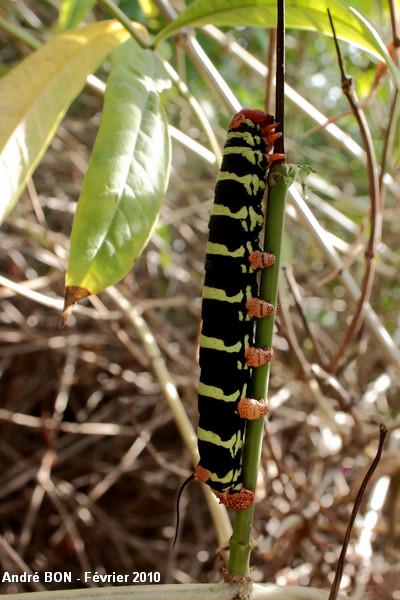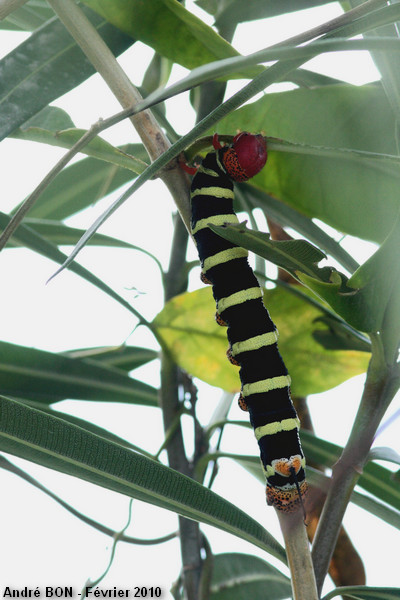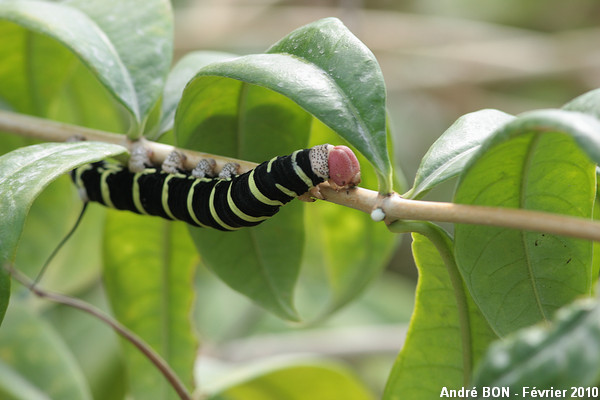


| Tetrio Sphinx (Pseudosphinx tetrio (Linnaeus, 1771)) |



|
|
Scientific name: Pseudosphinx tetrio (Linnaeus, 1771) Common name: Tetrio Sphinx French name: Sphinx du frangipanier Order: Lepidoptera Suborder: Heterocera Family: Sphingidae Subfamily: Macroglossinae Wingspan: 120-140 mm. Females are slightly larger than males. Biotope: Dry lowland regions. Geographic area: Tropical and subtropical America (from southern Brazil to the southern part of the United States), the Caribbean. Flight time: March to September. Number of generations : Caterpillar: Large black caterpillar with pale yellow rings and an orange reddish head. The legs are pink orange with black dots. The abdominal segment 8 shows an orange tubercle from which rises a long thin 'horn'. These caterpillars are voracious eaters. They can eat twice their weight in 24h and can cause important damage to the host plants. Host plant: Shrubs of the Plumieria genus and Golden Trumpet (Allamanda cathartica). |
The Tertio Sphix has brownish fore wings with a dark patch near the costal margin. They show large greyish areas. The hind wings are dark brown with white along the inner margin and along the lower half of the outer margin. The body is blackish brown with greyish white stripes. Females are usually paler than males. |
| [To know more about the Tetrio Sphinx] [Next picture] [Top] |

|
The bright colours of these caterpillars warn the potential predators about their toxicity. |
| [To know more about the Tetrio Sphinx] [Next picture] [Previous picture] [Top] |

|
My daughter, who has observed these caterpillars a couple of week before my trip there, has led me to this place. She has told me that the number of caterpillars has strongly decreased. |
| [To know more about the Tetrio Sphinx] [Previous picture] [Top] |

|
I have not noticed any important damage caused by the voracious caterpillars on the host plants. |